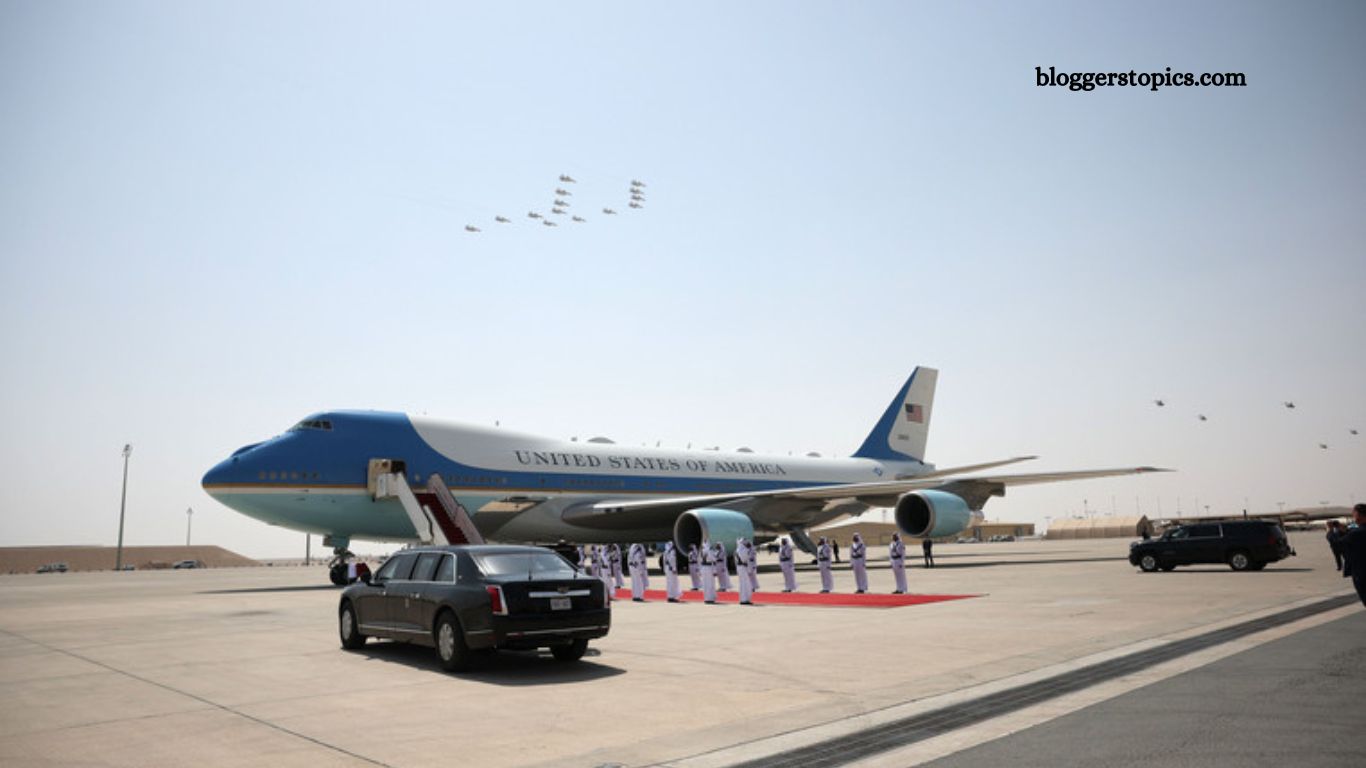A Jumbo Jet Looking for a Home
The Qatari royal family—known for one of the most extravagant private aviation fleets in the world—has been quietly trying to shed some of its largest aircraft. Among them: a highly customized Boeing 747-8 once priced at over $367 million. After years on the market with no buyer, the plane may have found an unlikely new home with former U.S. President Donald Trump.
The motivations behind this potential handoff are more practical than political. While many speculate that gifting the jet to Trump is an attempt to curry favor, aviation experts suggest a simpler reason: the Qataris simply no longer want it.
Read More: Men Twice as Likely to Die from ‘Broken Heart Syndrome,’ Study Reveals
Luxury with a High Price Tag
The 747-8 in question—registered as A7-HBJ—was purchased in 2012 and extensively modified for VIP travel. Designed for just 89 passengers, it features two bedrooms, multiple lounges and meeting rooms, and an interior finished in sycamore and wakapou wood, custom rugs, and silk fabrics. The lavish design, by Parisian firm Cabinet Pinto, took three years to complete.
Despite its opulence, the aircraft is an expensive liability. According to industry estimates, operating this type of VIP 747 can cost upwards of $23,000 per hour. Maintaining it also comes with significant costs, including scheduled overhauls that can run into the millions.
Fading Demand for Flying Palaces
The Qatari royals are not alone in their desire to downsize. Governments and royal families worldwide are moving away from large, fuel-guzzling jets like the Boeing 747 and Airbus A340. Modern aircraft such as the Boeing 787 and Airbus A350 offer greater fuel efficiency, lower maintenance costs, and access to more airports.
“Qatar, like many modern states, is shifting toward leaner, more versatile aircraft,” says Linus Bauer, managing director of Dubai-based aviation consultancy BAA & Partners. He calls the potential handover to Trump “a creative disposal strategy” that reflects changing trends in diplomatic aviation.
Hard to Sell, Harder to Convert
Despite their luxury, jets like the Qatari 747-8 are extremely difficult to sell. Their customized interiors and limited commercial use make them ill-suited for conversion into cargo freighters or commercial aircraft. Many, like a similar Saudi-owned 747-8 with just 42 flight hours, have ended up scrapped for parts.
The market for such planes is “incredibly illiquid,” notes aerospace analyst Richard Aboulafia. Even if someone wanted the plane, turning it into something useful—like a freighter—would require gutting the interior, reinforcing the structure, and re-certifying the aircraft. The costs are often prohibitive.
Trump’s Interest and the Air Force One Delay
Trump, frustrated with Boeing’s delays in delivering two new Air Force One jets, has shown public enthusiasm for the Qatari 747, claiming it could save American taxpayers “hundreds of millions of dollars.” But aerospace experts disagree.
To meet presidential standards, the plane would require extensive modifications, including encrypted communications, nuclear-blast protection, and missile defense systems. Starting from scratch would likely delay deployment by at least five years, experts say.
“I can’t imagine any well-trained senior Air Force officer saying this is a good idea,” says Aboulafia.
Ethical and Strategic Concerns
The idea of a former president—or potentially a future one—accepting such a valuable gift from a foreign power raises ethical questions. Even if Trump claims the plane would be a gift to the United States, critics warn of the diplomatic implications.
Qatar has a history of using its wealth to build influence abroad. The Gulf nation hosts 10,000 U.S. troops at Al Udeid air base and has invested billions in U.S. institutions. Its ties to the Trump family are well documented, including real estate ventures and proposed projects like a Trump-branded golf course in Qatar.
An Aircraft No Longer Needed
If Trump accepts the 747, Qatar will still have an ample fleet at its disposal. The Amiri Flight, which manages the royal aircraft, includes numerous Airbus and Boeing jets as well as smaller business aircraft. Qatar also has access to Qatar Airways’ extensive executive fleet.
In the end, the decision to hand off the jet may be as much about economics and convenience as it is about diplomacy. As aviation consultant Brian Foley puts it: “I don’t think they’ll miss it.”
Frequently Asked Questions
Why use the word “Glad” in the title?
The word “glad” suggests that the Qatari government or royal family sees a clear benefit in parting with the plane. It highlights that this isn’t a reluctant or politically pressured decision—it’s practical, even opportunistic.
Why say “Offload” instead of “Sell” or “Give”?
“Offload” is intentionally chosen to convey that Qatar is eager to get rid of the plane, possibly at no profit, due to the financial and logistical burdens of keeping it. It implies the transfer is more about disposal than transaction.
Why describe the plane as “Lavish”?
“Lavish” captures the extreme luxury and customization of the aircraft, including its bespoke interior, elite fittings, and opulent design features. This word helps establish the scale of extravagance involved and why it’s newsworthy.
Why name Trump specifically in the title?
Donald Trump is a globally recognized figure whose interest in aircraft, presidential optics, and luxury makes him a fitting and intriguing recipient of such a jet. Including his name immediately draws attention and sets the political angle.
Is the title neutral or biased?
The title aims to strike a balance. It is direct but not sensationalist, signaling a fact-based, well-reasoned article. It avoids assumptions of motive (like bribery or political maneuvering) and focuses instead on strategic disposal.
Would a more formal title work better for professional readers?
Possibly. For a more formal audience, an alternative might be:
“Qatar’s Strategic Disposal: Why a Lavish 747 May Be Headed to Trump”
However, the original version is crafted to balance professionalism with broad public interest.
Conclusion
The potential transfer of Qatar’s ultra-luxurious Boeing 747-8 to Donald Trump is less a grand geopolitical gesture and more a pragmatic solution to a complex asset problem. As global tastes and priorities in state and VIP aviation shift toward smaller, more efficient aircraft, the era of flying palaces is fading fast.
For Qatar, offloading the jet spares them mounting maintenance costs and the headache of an unsellable asset. For Trump, it represents a potential workaround to his frustrations with Air Force One delays—though fraught with logistical, ethical, and security concerns.






